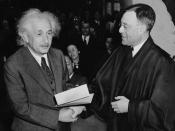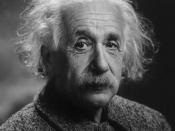Eastern Influences on Modern Culture
The opening of feudal Japan, in 1853, to the western world created an influx of commercial goods from the east into western cultures. Along with ordinary goods came works of art as well as ideas that were in great contrast to those of modern western cultures; these ideas and methods had a significant influence on the development of modern culture in the west. Most notably eastern ideas of space and time had the most significant impact on modern culture, especially in the areas of art and science. Eastern philosophy had an effect on the work of western artists such as Cezanne and Rodin, and these ideas were given validity in modern culture by discoveries in physics long after their conception by eastern cultures.
Eastern concepts of space mass and form drastically differ from those of western cultures. The introduction of these new ideas into western society had significant influence on modern art.
In western art empty space was considered taboo; artists would fill every last inch of their canvases with things. To western thinking art was something and space was nothing, so emptiness was not acceptable for art (Shlain 161). To eastern cultures space was something that held the possibility for the creation of anything. Anything and everything came from nothing, from the "void". The concept of the void was very foreign to western culture, in the west space was never changed, in the east space had the capacity to evolve. The physical manifestation of these differing notions of space in art can be seen in ukioye, in the works of Hokusai such as "The Poet Ono Noh", where figures and images seem to float in space with no discernable background or environment. The difference can also be seen in Japanese use of perspective. Unlike...



A Decent Essay
This is overall a well-written essay at an appropriate level. A bibliography would be nice, though - the references to "Shlain" are never resolved. From the subject matter, they are probably references to one of Leonard Shalin's many works - but which one? Other than that, this is excellent.
2 out of 2 people found this comment useful.